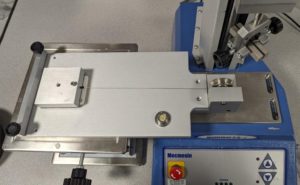Unravelling complexities: How forensic engineering enhances device development
1 May 2024
In technological innovation, the journey from concept to market-ready device is often fraught with challenges and uncertainties. From intricate mechanical systems to sophisticated electronic circuits, the development of any device requires meticulous planning, design, and testing. However, even the most thorough processes can encounter performance issues. This is where forensic engineering emerges as a vital tool in identifying, understanding, and resolving such complexities.
The role of forensic engineering in device development:
When developing a new device, engineers are often confronted with multifaceted challenges, ranging from design requirements to manufacturing constraints. These issues can manifest during prototyping, testing, or even after the product has been released to the market. Forensic engineering provides a structured approach to address these challenges by:
Root cause analysis:
Forensic engineers employ a variety of techniques, including failure mode and effects analysis (FMEA), and cause-and-effect diagrams to delve deep into the underlying causes of failures or performance discrepancies. By meticulously examining every aspect of the device’s design, materials, manufacturing processes, and operational conditions, they can pinpoint the exact factors contributing to the problem.
By using these tools, engineers can speed up identification of the root cause as they approach the problem in a structured manner. In a recent Springboard project for a life sciences client, Springboard created a cause-and-effect chain which helped to identify the root cause within 2 months, something our clients had been struggling with for over half a year.

Figure 1: A cause-and-effect diagram developed on a recent project.
Simulation and modelling
Advanced simulation tools allow engineers to recreate real-world scenarios and simulate the behaviour of complex systems under different conditions. Springboard has experience in developing and utilising Finite Element Analysis (FEA) and Computational Fluid Dynamics (CFD) models, which enables the performance of a device to be evaluated without the need for a complex and time-consuming testing regime. Springboard also has experience in developing energy models which can ensure design and simulation efforts prioritise the most important features. By developing accurate models based on empirical data and theoretical principles, forensic engineers can optimise the design to enhance reliability and functionality.
![]()
Figure 2: Hyperelastic FEA model of two components and a liquid silicone rubber.
In a past project working with a pharmaceutical partner, Springboard used mathematical modelling and combined this with real-world testing to identify and rectify the issue with a injection device.
Materials analysis:
The selection of appropriate materials is crucial in ensuring the durability, safety, and performance of a device. Forensic engineers utilize material testing techniques such as spectroscopy, microscopy, and mechanical testing to assess the properties and integrity of various materials used in device construction. This analysis helps identify material defects, degradation mechanisms, and compatibility issues that may compromise the device’s performance or longevity. On a number of recent projects, these techniques have been critical in identifying contamination on some of our client’s products. These discoveries allowed us to identify their root cause where previously we had observed inconsistencies in the data collected.
Figure 3: Friction test used to investigate whether material properties are appropriate for their application.
Human factors engineering:
In many cases, device failures can be attributed to human error or ergonomic issues rather than technical flaws. Forensic engineers employ principles of human factors engineering to evaluate the user interface, interaction design, and ergonomic factors influencing the usability and safety of a device. By conducting usability studies, task analysis, and cognitive walkthroughs, they can identify potential user-related issues and implement design improvements to enhance user experience and minimize errors.
In a recent project, Springboard conducted a user study which allowed us to implement some design changes as an unexpected user error occurred.
Regulatory compliance:
Compliance with industry standards and regulatory requirements is paramount in ensuring the safety, quality, and marketability of a device. Forensic engineers possess in-depth knowledge of relevant regulations, standards, and best practices governing various industries, including medical devices. By conducting thorough audits and assessments, they help device developers navigate the complex landscape of regulatory compliance and ensure that their products meet the necessary requirements.
In the dynamic landscape of device development, where innovation intersects with complexity, the role of forensic engineering cannot be overstated. By leveraging advanced analytical techniques, simulation tools, and interdisciplinary expertise, forensic engineers empower device developers to overcome challenges, mitigate risks, and deliver products that meet the highest standards of performance, reliability, and safety.
Do you have a problem with a device that you are struggling to get to the bottom of? Get in touch with us today to see if we can help.



